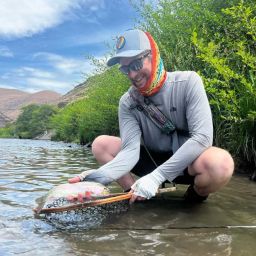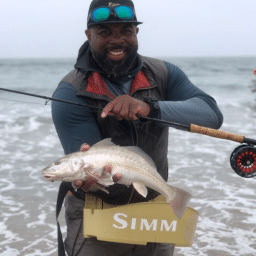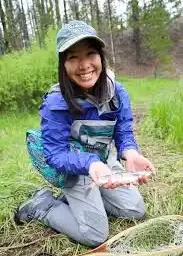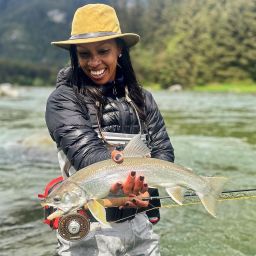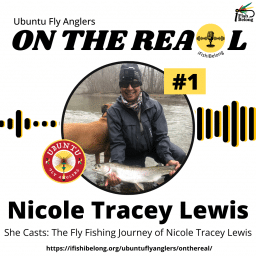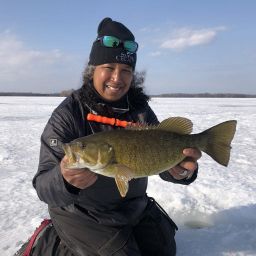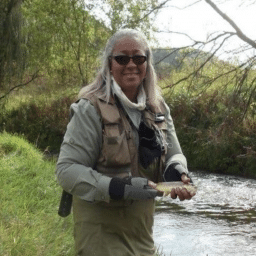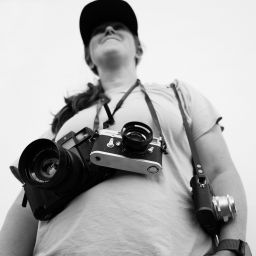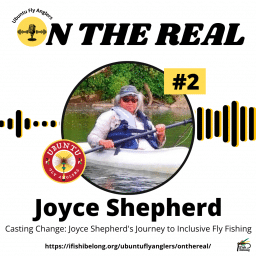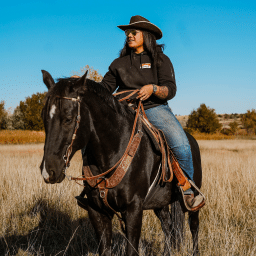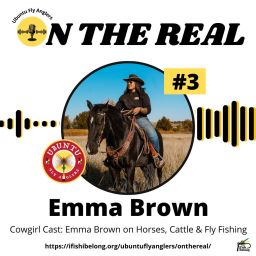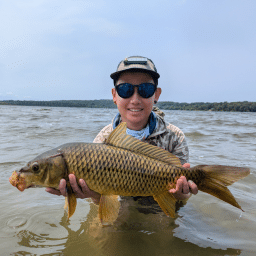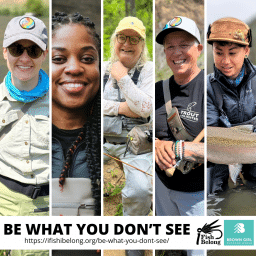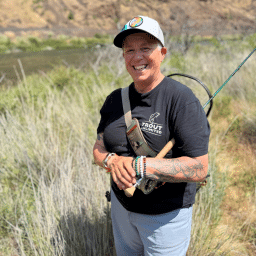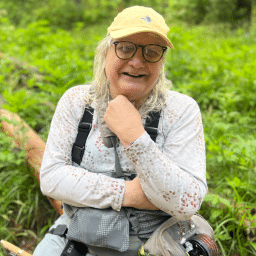In September, iFishibelong’s Be What You Don’t See Campaign features Brita Fordice @seafly907 talking with J. Michelle Swope @olywomenonthefly about her work as a groundbreaking fly designer and fly fishing guide.
Brita is a full-time product developer for Far Bank Enterprises, conceptualizing, designing, and testing flies for all species under the Rio brand. If you fish the salt, you have probably fished with a pattern that she has developed for Rio. She has gained a large social media following based on her innovative fly designs and her years of guiding experience. Read on to learn what she has to say about being a woman angler making her way, and her mark, in a traditionally male industry.
Be yourself first and foremost in all areas. Be true to what you feel and you believe in, and others will look to you as a role model and hopefully do the same.
Born and raised in Washington, Brita grew up on the banks of the Stillaguamish River with a grandfather and father who were fly fishers. With their help, she learned to fly fish at age 8. She taught herself to tie flies at age 10 by reading about classic flies in books lying around the family cabin. Her very first self-tied fly even caught a 9” Dolly Varden! She caught her first steelhead as a teenager, and her passion for fly fishing became undeniable.
Brita went on to live and fish in Sun Valley, Idaho, and Alaska, eventually returning home to Washington state. Puget Sound steelhead is still her favorite species to target, although she has stopped guiding for them due to their scarcity. And fishing the salt is a major draw for her, catching sea run cutthroat, salmon, and trigger fish, with Florida her preferred fishing destination.
When Brita returned home to Washington, she secured a job at the Avid Angler, working full-time in the fly shop. Then she began to teach fly tying classes at the shop, including how to tie a flat wing adjusted for the native cutthroat of Puget Sound. Guiding on the Sound and Hood Canal came next.
Brita began to devote more of her free time to fly tying while experiencing challenges in her marriage. She also realized that if she was going to leave the marriage, she would have to build her guiding clientele and started posting a fly a day on the then new social media platform, Instagram. Her following, and her business, grew, even though she refused to depict herself as “a woman holding a fly rod.”
“My initial intent was to just post a fly and not myself (to be) perceived as just somebody who’s an angler and a tier as opposed to a female who’s in the fly fishing … Because I feel like at the time (2015) specifically you would be perceived a little bit different.”She expressed her candid opinion on the matter in an essay entitled “I Am Not Arm Candy in Waders,” published in the September, 2016 issue of Southern Culture on the Fly. Brita reminds women wanting to get in to the industry, “you don’t need to sell yourself short. I would rather have 1/10th the followers of other female anglers and know that my followers are genuine than wonder if it’s only because I’m a female with a fly rod in hand.”
When asked how to maintain authenticity and integrity on social media, Brita states “it’s just being the right role model.” Brita wants people to represent themselves however they want, with the only rule being “not posing where it doesn’t need to be done.”
A Far Bank executive, who had seen her online account, contacted Brita to assist in developing a fly-fishing program for the company. Her first position was in customer service answering technical questions, but she was quickly asked to start the Rio Flies program, which she founded with Patrick Kilby, a former manager at Idylwilde Flies.
Today, Brita’s title is product developer. An important part of her job is to run the signature fly tyer program – essentially designing patterns that complement the classics (Royal Wulff, Parachute Adams, etc.) and are used in specific environments.
When asked to name the five flies everyone should have in their trout fly box, Brita listed the Pink Worm, Pheasant Tail (size 16), Wooly Bugger, Chubby Chernobyl, and the classic Adams (size 6) dry fly. For trigger fish, Brita points to the cheeseburger crab, a signature Rio fly designed by Jeffrey Feczko specifically to target the species.
Fly tying is expensive and can be overwhelming. Here’s Brita’s advice for starting out:
- Don’t buy all the materials or feel you must try everything
- Decide between wet flies and dry flies – ask yourself which you fish the most, or which flies you enjoy tying
- Start out purchasing materials for a limited number of patterns, then branch out as your skills improve
- Use hooks that can work for many different patterns within your choice of wet or dry
- When you’ve got the basics down, change things up and experiment
- Invest in a solid vice. Brita uses an HMH vice, but you can find sturdy vices priced under $100 at Griffin Vices
- Many fly tying kits contain tools that may not all be necessary. Essential items include a pair of scissors, a bobbin, and a whip finisher. Brands such as Dr. Slick and Loon are commonly suggested for basic tools. Brita prefers using the bobbin made by C&F.
- For hatch matching, watch videos of the real insect’s movements instead of relying solely on fly patterns. This can inspire creative choices in materials and techniques beyond standard approaches like using foam for terrestrials.
- Test your flies in water to watch how they move.
- Follow @seafly907 on Instagram
- Subscribe to Brita’s YouTube Fly Tying Channel
- Checkout Rio’s Signature Fly Tyers
- Book a guided trip with Brita through All Waters Fly Fishing and Guide Services
- Participate as much as you feel comfortable in groups like United Women on the Fly which bring women together
- Become a fishing activist and support conservation efforts such as the Bonefish and Tarpon Trust
- Support other women on social media and in real life by lifting them up and avoiding criticism
- Put your head down and work on your tying skills.
- Don’t try and compare yourself against anybody else
- · Start thinking outside the box, and experiment
The 2025 iFishiBelong “Be What You Don’t See” campaign highlights leaders breaking barriers in the fishing industry. Each month, we will feature individuals who challenge conventions and inspire change with passion and resilience, motivating the next generation of anglers to create their paths and “be what they don’t see.” By highlighting these trailblazers, we aim to inspire broader participation and show that leadership roles in the fishing industry are accessible to everyone, creating a more inclusive vision of success.
